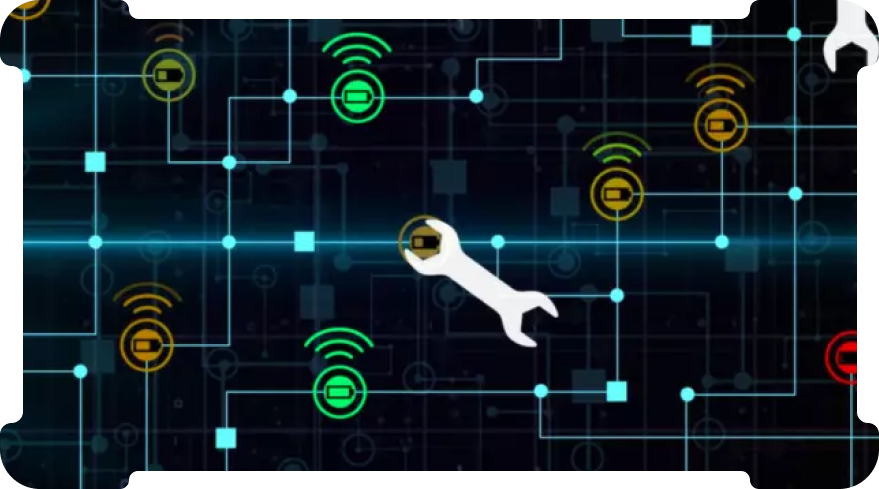
Factory of the Future

Many analysts; He predicts that there will be an explosion in the number of industrial “internet of things” (IoT) devices that will come online in the next decade. Sensors play a big role in these predictions. Unfortunately, sensors have their own drawbacks, many of which come from the limited energy supply and limited life of their batteries. The newly established Everactive has developed industrial sensors that operate around the clock, require minimal maintenance and can last for more than 20 years. The company created the sensors not by redesigning their batteries, but by eliminating them entirely. The important thing in this system; Everactive's ultra-low power integrated circuits that harvest energy from sources such as indoor light and vibrations to generate data. Sensors continuously send this data to Everactive's cloud-based dashboard, providing users with real-time insights, analytics and alerts to help them harness the full power of industrial IoT devices. Everactive Co-Chief Technology Officer David Wentzloff: “It's all powered by ultra-low-power chips that support continuous monitoring. Because our power supply is unlimited, we don't make trade-offs like keeping the radios off or making another limiter to save battery life.” Everactive creates finished products on its chips that customers can quickly place in large numbers. Its first product follows steam traps that release condensate from steam systems. Such systems are used in a variety of industries, and Everactive's clients include companies in industries such as oil and gas, paper and food manufacturing. Everactive has also developed a sensor to monitor rotating machinery such as motors and pumps running on the second generation of its battery-free chips. The company believes it is well positioned to play a role in the IoT-powered transition to the factory of the future, avoiding the costs and constraints associated with other sensors. Researcher Wentzloff: “This is a completely maintenance-free, battery-free, harvested energy technology that is always connected to the cloud.” Getting Rid of Batteries… Researcher Wentzloff and Everactive Co-Founder and CTO Benton Calhoun; He has been working on low-power circuit design for over a decade, starting with his time at MIT. While Calhoun's research focuses on low-power digital circuits and memory; Wentzloff focused on low-power radios. Wentzloff and Calhoun's academic labs have finally created a battery-free physiological monitor that can monitor the wearer's movement, temperature, heart rate, and other signals while working with energy from body heat, and send that data to a phone. In 2014, they partnered with semiconductor industry veteran Brendan Richardson to form the company, originally called PsiKick. Initially; The founders sought to redesign circuit designs that included features of complete computing systems such as sensor interfaces, processing power, memory, and radio signals. They also needed to incorporate energy harvesting mechanisms and power management capabilities. Founders; They tried to sell their chips to companies and developed solutions on it, but soon realized that the industry was not familiar enough with battery-free chips. Researcher Wentzloff: "There's an education level to it, because there's a generation of engineers who are used to thinking about system design with battery-powered chips." learning curve; led the founders to start building their own solutions for customers. Today, Everactive offers its sensors as part of a broader service that includes wireless networks and data analytics. The company's sensors can be operated with small vibrations, dim lights as low as 100 lux inside the factory, and temperature differences below 10 degrees Fahrenheit. Devices can detect temperature, acceleration, vibration, pressure, and more. The company says its sensors are much less costly to operate than traditional sensors and avoid the maintenance issues that come with commissioning thousands of battery-powered devices. For example, Everactive evaluated the cost of deploying 10,000 conventional sensors. Assuming a three-year battery life, the customer will need to replace an average of 3,333 batteries each year, which is more than nine batteries per day. The Next Technological Revolution Everactive customers can install more sensors, saving on maintenance and replacement costs. This, combined with the near-uninterrupted operation of these sensors, brings a new level of visibility into operations. Researcher Calhoun: “Removing restrictions on sensor installations starts to give you a sixth sense of how your overall operations are going. This is exciting. Customers want to know exactly what is going on wherever they are interested in a magic wand. The ability to place tens of thousands of sensors brings you closer to that magic wand. “ With Everactive's thousands of steam trap sensors already deployed, Wentzloff; believes its sensors for motors and other rotating machines will make an even greater impact on the IoT market. Beyond Everactive's second-generation products, the founders say their sensors are translucent, flexible, and a few years away from postage stamp size. At this point, customers simply attach sensors to machines to start generating data. Such ease of installation and use will have consequences far beyond the factory floor.